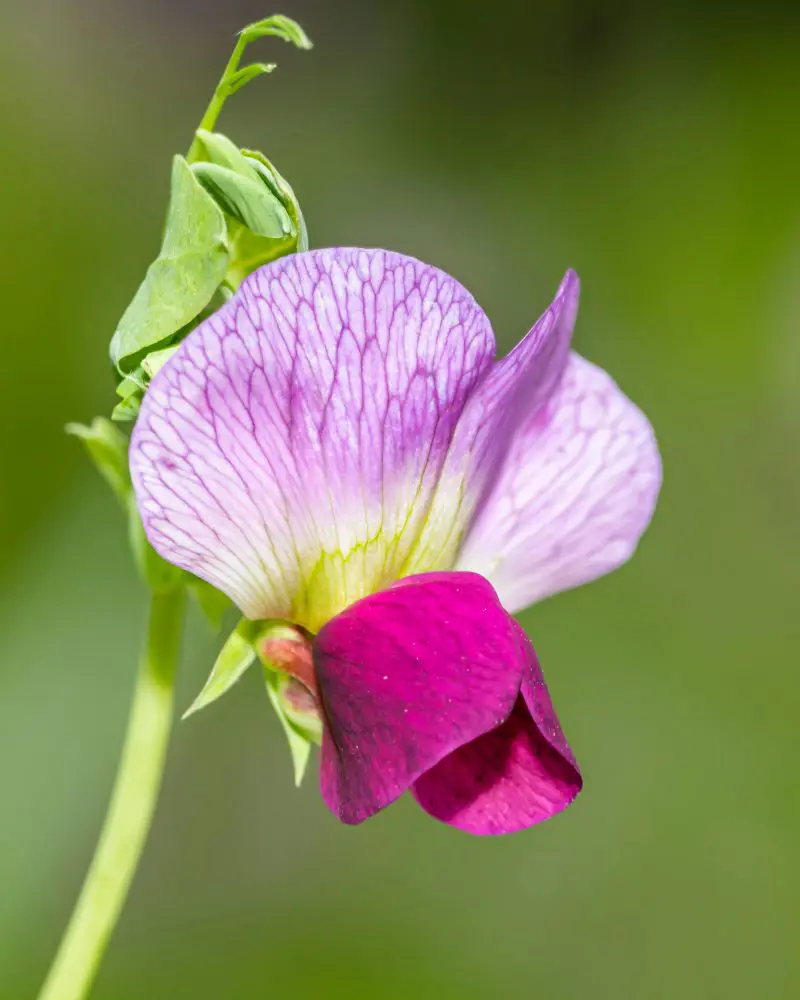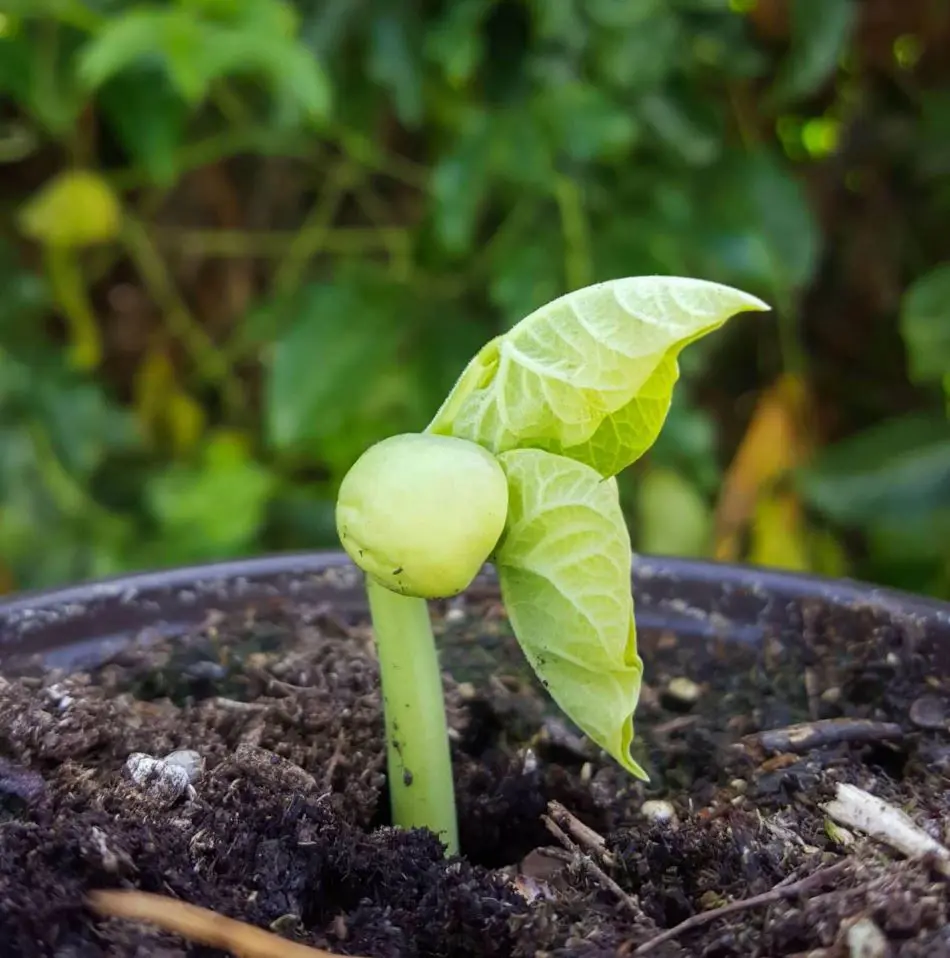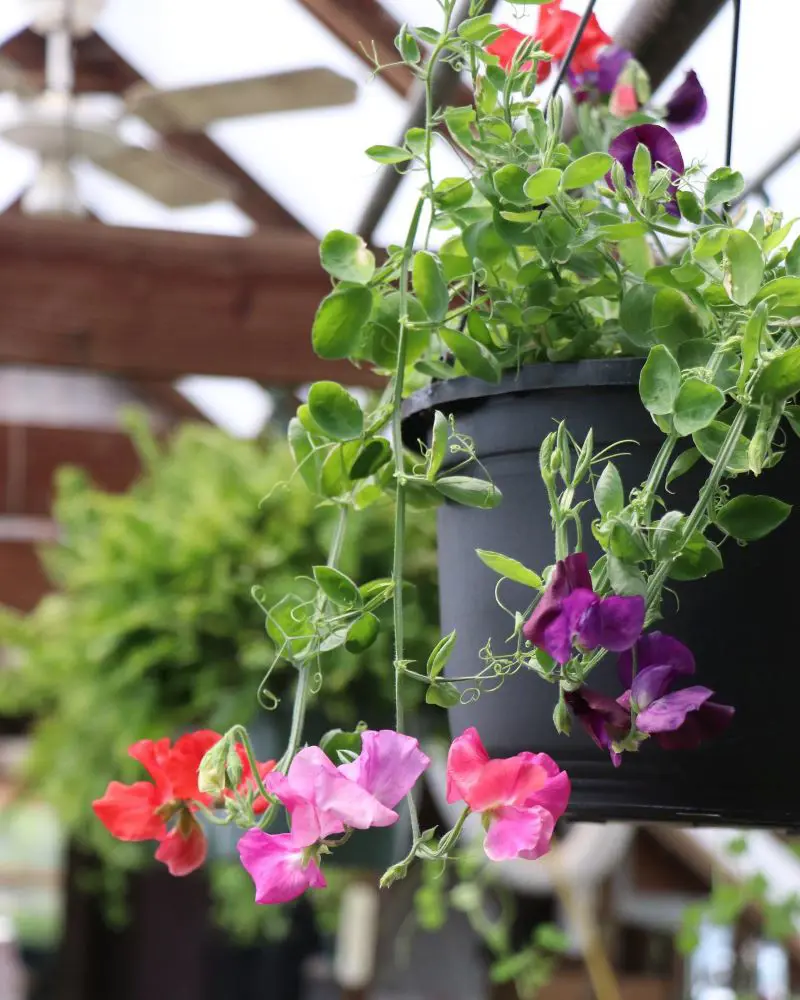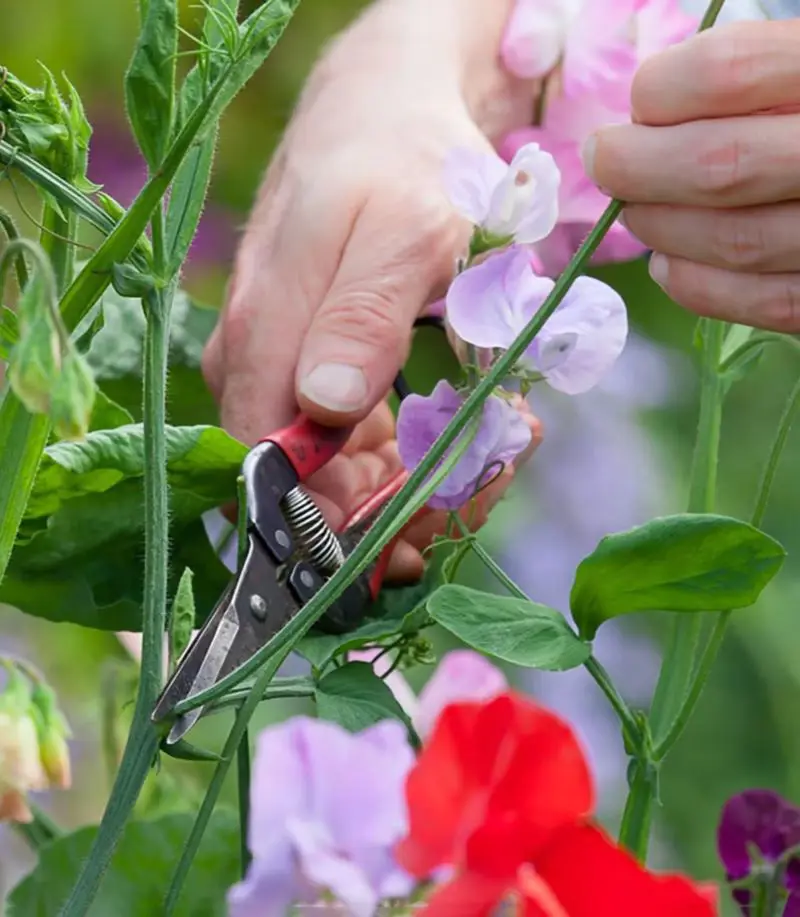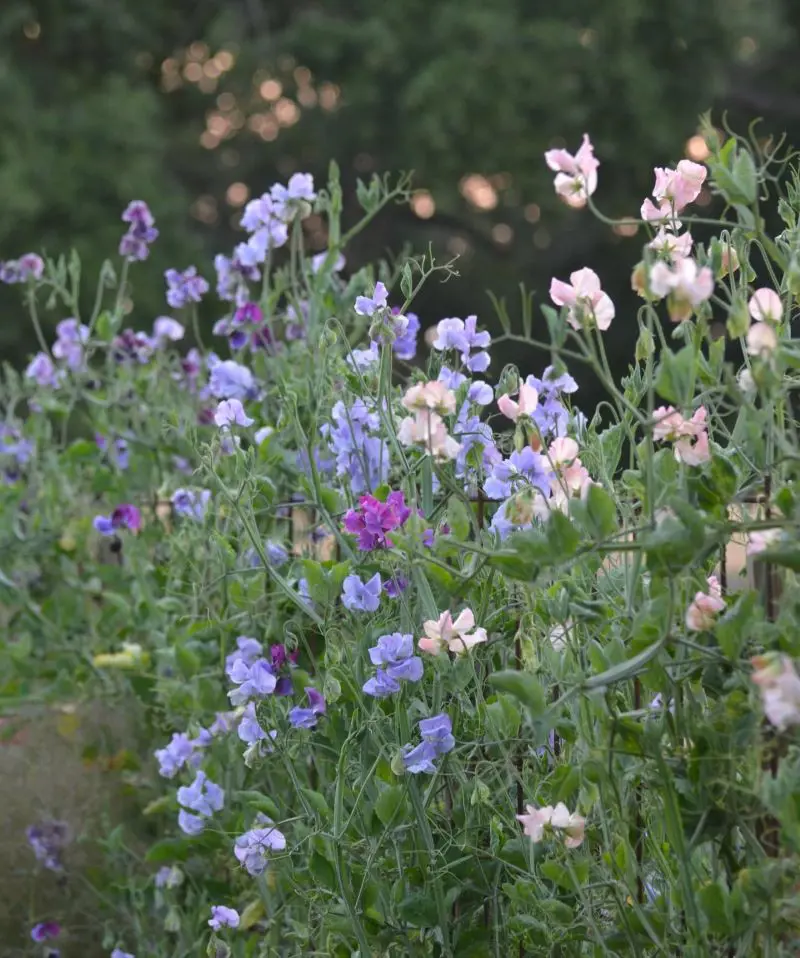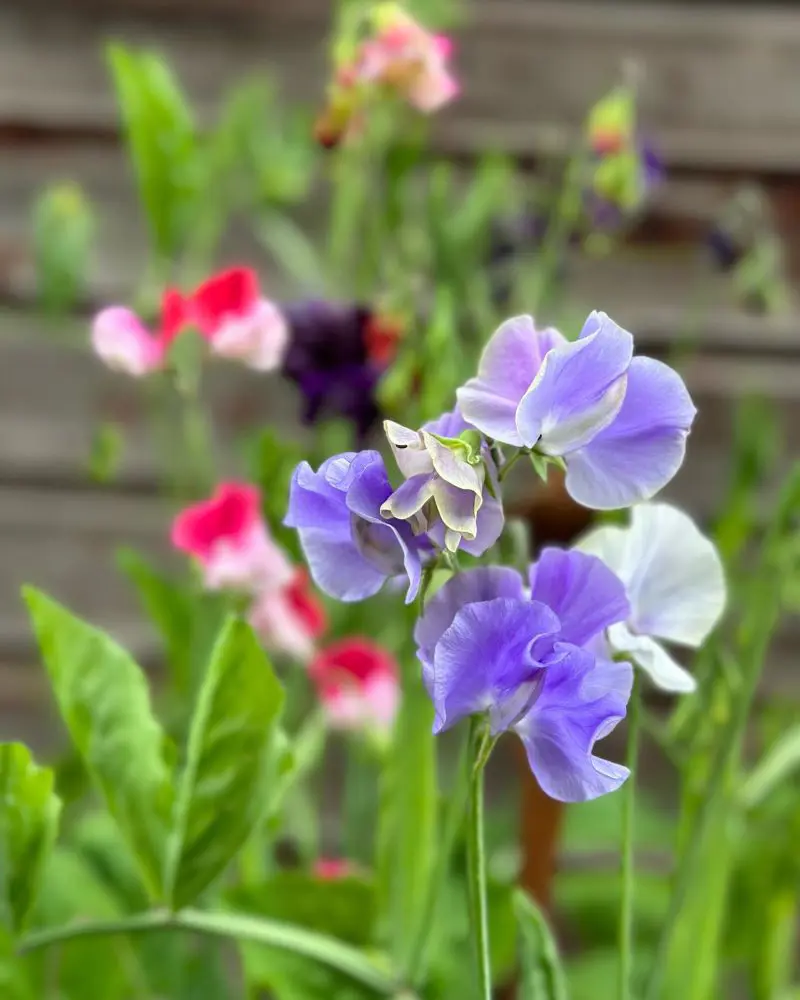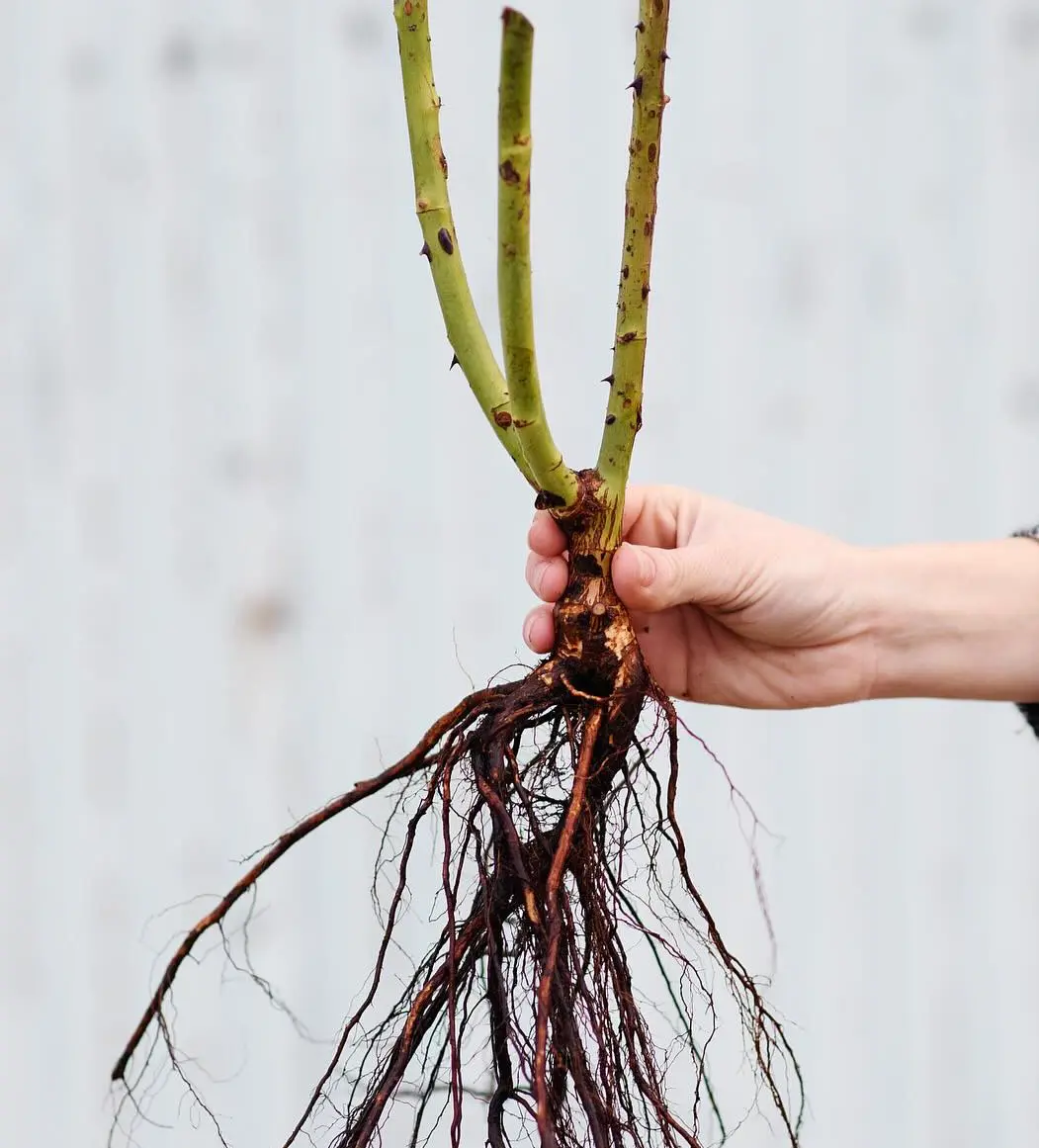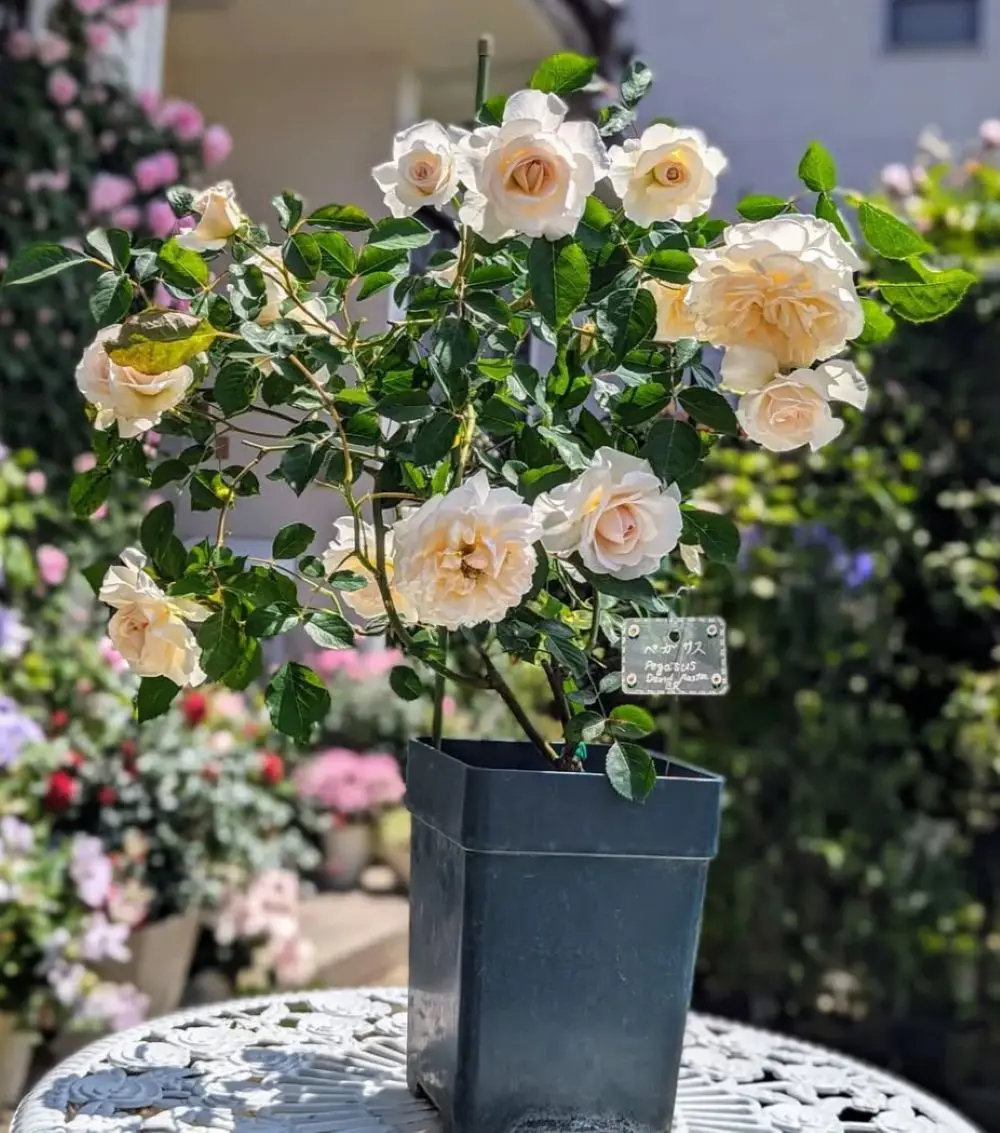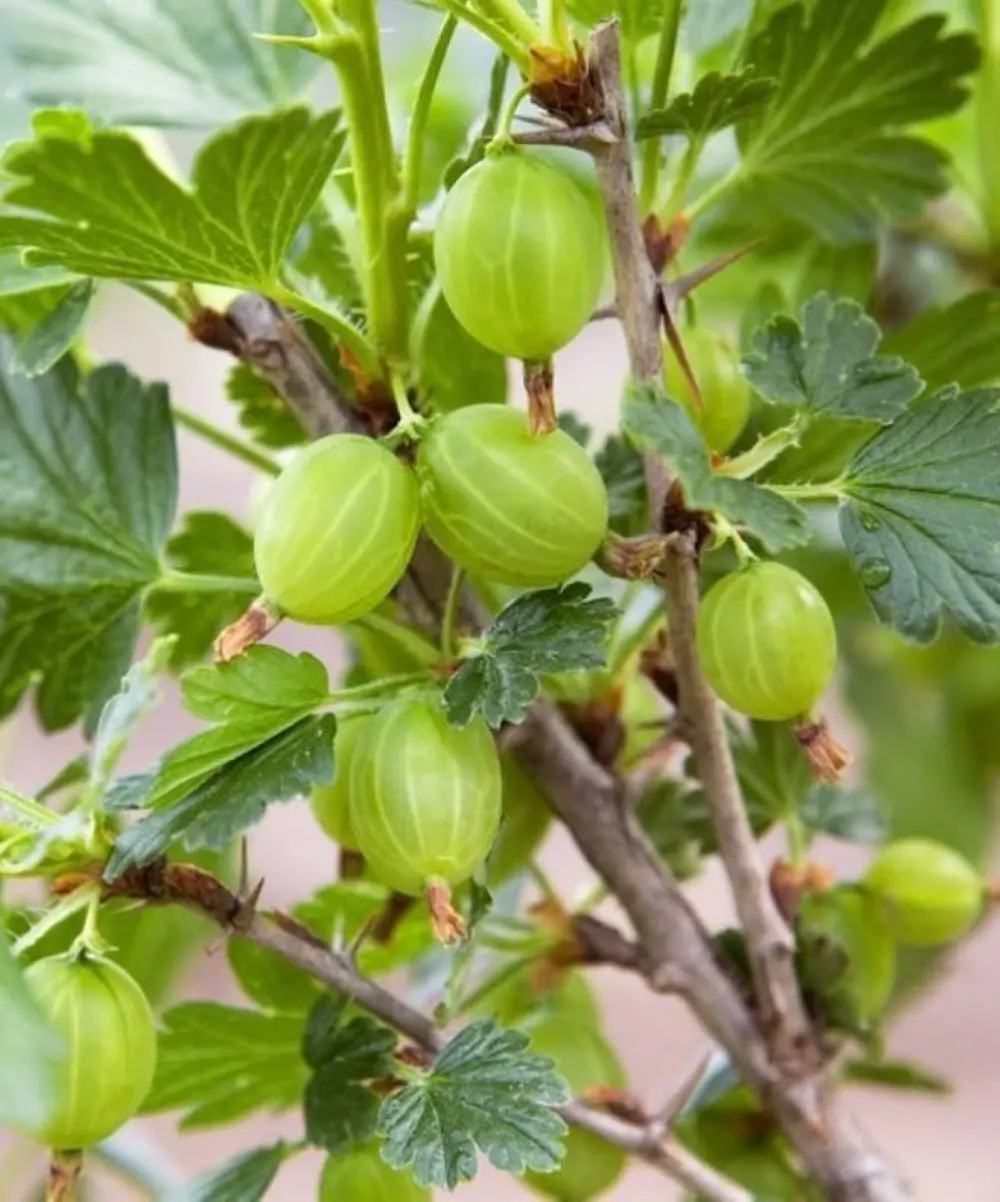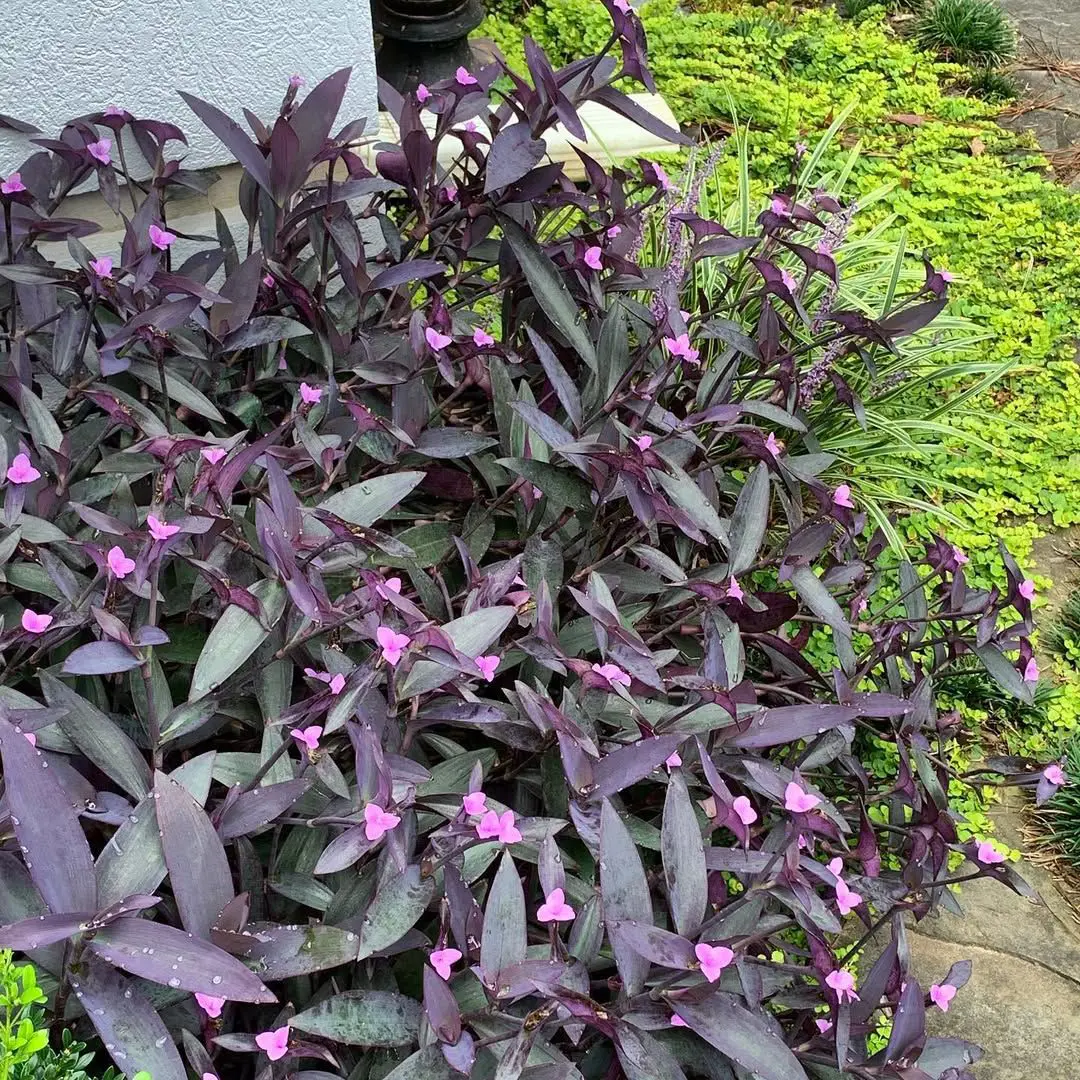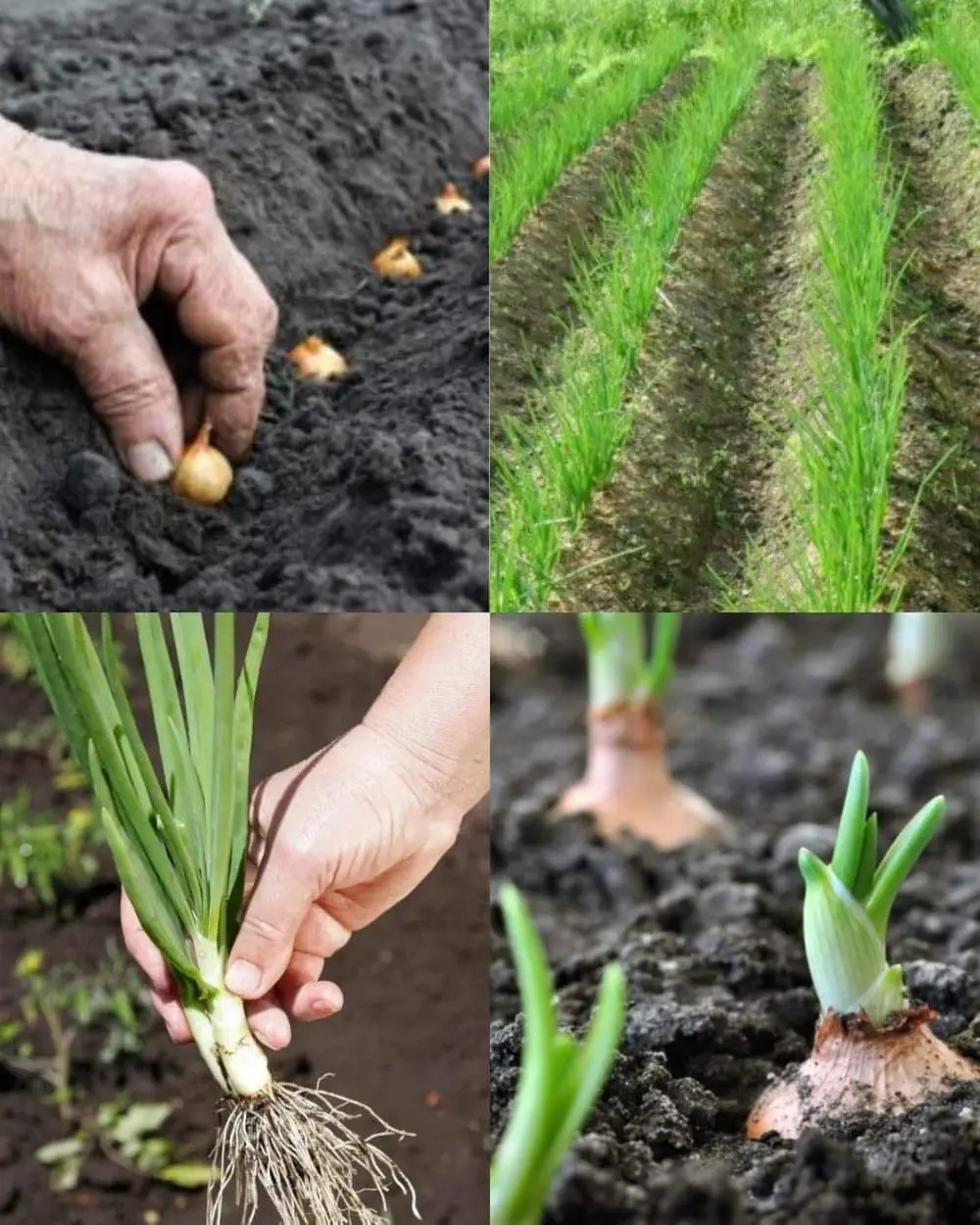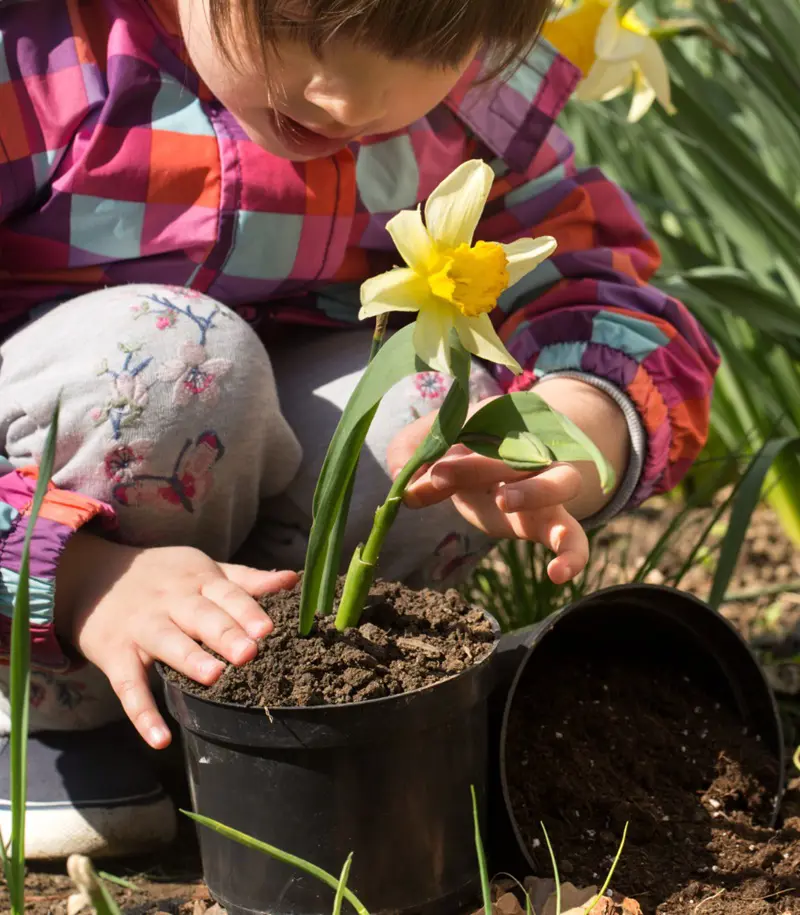Overview of Sweet Peas
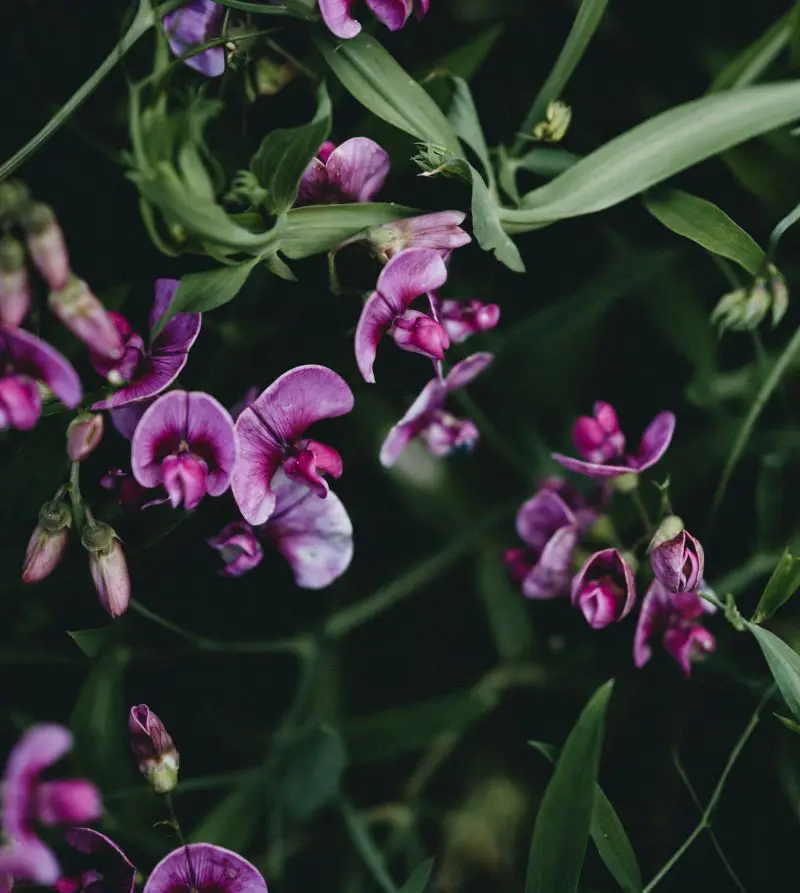
- Common Name: Sweet pea, Perennial pea, Everlasting pea
- Botanical Name: Lathyrus odoratus
- Family: Fabaceae
- Plant Type: Annual, vine
- Mature size: 6-8 ft tall
- Sun exposure: Full, partial
- Soil type and pH: Well-drained, Alkaline
- Blooming season: Summer, fall
- Flower Color: Red, pink, blue, white, lavender
Sweet pea is a climbing annual plant with a sweet smell in the legume genus. These flowers are at home in a cutting garden, border garden, woodland, or twinning lazily on a rustic trellis or an arch.
They are available in many colors, from pearly white to ritzy magentas and inky purples. Also, you can find several sweet pea varieties for every situation, from 8-foot-plus scramblers to dwarf bedding ones, suitable for containers and borders without support.
The fast-growing ones lend a nostalgic aura to the gardens and a reminder of the beautiful old-fashioned gardens. Their dainty winged blossoms are matched only by their honey and orange blossom perfume.
These vintage varieties were selected for their vibrant colors and intense fragrance and come in every color except yellow. They are grown on bamboo tripods but typically along a trellis or fence for support.
